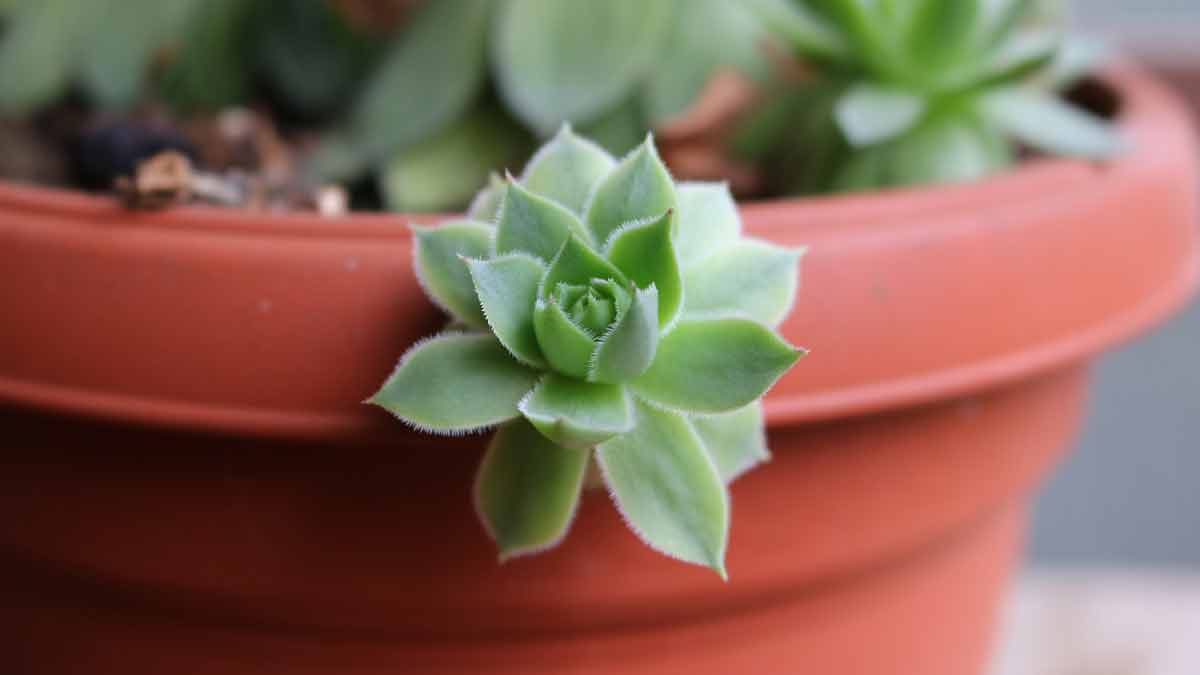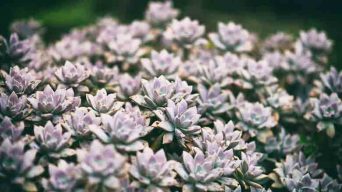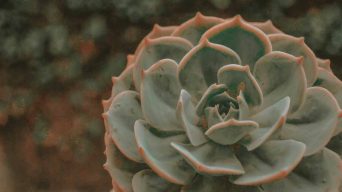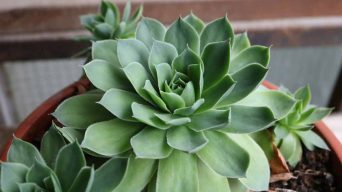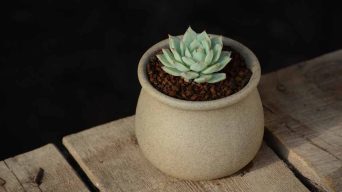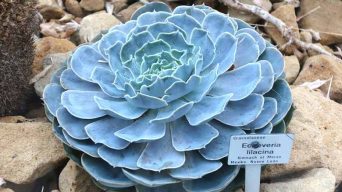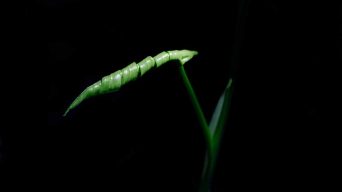Key Takeaways
- Echeveria growth rates are influenced by lighting, temperature, soil quality, and watering practices.
- Different Echeveria species have varying growth rates, with some maturing faster than others.
- To achieve faster echeveria growth, it’s important to choose the right soil mix, optimize sunlight exposure, fertilize sparingly with a balanced fertilizer formulated for succulents, water only when necessary, and allow the soil to dry out completely between watering sessions. Avoid common mistakes like overwatering and poor drainage when growing Echeveria.
Echeverias are beloved succulents known for their alluring rosette shape and an impressive variety of colors.
But have you ever wondered how fast these charming plants grow and if there’s a way to speed up the process?
Here we’ll explore the factors affecting echeveria growth rates, compare different species’ timelines, and reveal proven techniques to help succulent plants flourish more quickly.
Understanding Echeveria Growth
The growth rate of echeveria plants is greatly influenced by factors such as sunlight, watering habits, temperature, and soil type.
Factors That Affect Growth Rate
Several factors play a crucial role in determining the growth rate of Echeveria, and understanding these aspects can help maximize your plant’s potential.
One of the most critical elements for their growth is lighting – succulents like Echeverias thrive under bright light conditions, with some even needing direct sunlight exposure to grow at an optimal rate.
Temperature is another factor directly affecting Echeveria’s growing season and dormancy phase.
These plants experience faster growth during warmer months while slowing down in colder seasons.
Apart from temperature, soil quality also plays an essential part in supporting growth – well-draining soils rich in nutrients are key to promoting healthy root systems and overall plant development.
Additionally, watering frequency significantly impacts their progress; overwatering or underwatering can lead to various issues, such as rotting roots or leaves dropping off due to dehydration.
Typical Growth Timelines
Echeveria plants exhibit varying growth rates depending on the species and growing conditions.
However, these succulents are known for their rapid development under ideal circumstances.
Generally, a healthy Echeveria can grow from a mere two-inch size to an impressive 6-8 inches within one year.
Throughout their lifespan, which ranges from three years to several decades, these beautiful plants undergo numerous growth cycles.
For instance, during the active growing seasons of spring and summer, you’ll likely witness more accelerated growth compared to hibernation periods like winter months when they need less water and sunlight.
Echeverias’ growth timelines are influenced by various factors, including their genetics and hybridization between species with varying growth rates.
This can result in either fast-growing succulents like Kalanchoe that reach maturity and bloom within 1-2 years or slower-growing varieties such as Aloe Vera that take up to 3-4 years to reach their maximum size.
Different Echeveria Species And Their Growth Rates
Echeveria growth rates can vary substantially between species, with some maturing rapidly and others taking a more leisurely pace.
This section will explore some of the different Echeveria species and their respective growth rates, helping you determine the perfect addition to your plant collection.
| Echeveria Species | Growth Rate |
|---|---|
| Echeveria Hen and Chicks | Fast |
| Echeveria Prolifica | Fastest |
| Echeveria Agavoides | Moderate |
| Echeveria Runyonii (Topsy Turvy) | Moderate |
| Echeveria Perle von Nürnberg | Moderate |
| Echeveria Elegans (Mexican Snowballs or Mexican Roses) | Moderate |
| Echeveria Black Prince | Slow |
| Echeveria Lilacina (Ghost Echeveria) | Slow |
| Echeveria Gigantea | Slow |
As you can see, there’s considerable variation between Echeveria species, from the fast-growing Echeveria Hen and Chicks to the slower-growing Echeveria Gigantea.
Remember that these growth rates are approximate and can be influenced by light, water, soil, temperature, and care practices.
Techniques For Faster Echeveria Growth
If you want your Echeveria to grow faster, you must take some important steps.
First, choose the right soil mix and ensure the plant has good drainage to avoid root rot.
You should also optimize sunlight exposure by placing the plant near a sunny window or using artificial grow lights.
When fertilizing, use a balanced fertilizer designed explicitly for succulents and use it sparingly. Water only when necessary, and always allow the soil to dry completely before watering again.
Finally, use an appropriately sized pot for the Echeveria to give it enough space to grow.
Choosing The Right Soil
Choosing suitable soil is one of the most important factors in growing healthy Echeveria plants.
Well-drained soil that dries out quickly is crucial to prevent root rot and other diseases.
The ideal soil mix should contain a combination of peat moss, perlite, and coarse sand or grit to provide adequate drainage while retaining some moisture.
When repotting young Echeveria plants, use a mix specifically for succulent plants and ensure the pH level is around 6.0 or slightly acidic.
Mature Echeveria can be repotted every second year with fresh soil, but it’s essential not to damage their shallow roots during the process.
Optimizing Sunlight Exposure
Optimizing sunlight exposure is key to ensuring that your Echeveria plants grow at the fastest rate possible.
These succulents require bright, direct sunlight for about 6 hours per day to partial shade to thrive and grow successfully.
It’s also important to consider the temperature, keeping it between 65-80 degrees Fahrenheit to aid in faster growth.
One way to ensure proper sunlight exposure is by rotating your Echeveria plants every couple of weeks so all sides receive equal sunlight.
Not providing enough light can lead to leggy stems and leaves stretching out toward the light source rather than remaining compact and full.
On the other hand, too much direct sun can result in sunscald or scorching leaves.
Proper Fertilization
Echeverias require proper fertilization to grow optimally during their active growing period. It’s best to fertilize your Echeveria occasionally in spring and summer with a cactus or succulent fertilizer.
This type of fertilizer has low nitrogen levels that won’t burn the plant, making it ideal for succulents.
Apply the fertilizer sparingly directly onto the soil rather than on the leaves and stem.
More importantly, ensure you balance fertilization with other crucial needs, such as providing adequate light exposure, a well-draining soil mix suitable for succulents, reasonable watering regimen during the dormant season.
Watering Strategies
Proper watering is crucial to ensure your Echeveria succulents grow at their best.
Here are some watering strategies you can use:
- Water deeply but infrequently: Echeverias prefer to be watered deeply, allowing the soil to dry out before watering again. Watering too frequently can lead to root rot and damage to the plant.
- Check the soil moisture level: Before watering, check the soil moisture with your finger or a moisture meter to avoid overwatering. Allow the top inch of soil to dry out completely before watering.
- Use room temperature water: Avoid cold water as it can shock the plant’s roots. Room temperature water is ideal for Echeverias.
- Water from the bottom up: To prevent getting leaves wet, which can cause rot or fungal infections, water from the bottom of the pot by placing it in a tray of water and allowing it to soak for about 30 minutes.
- Adjust the watering frequency based on the season: When Echeverias go dormant in winter, reduce the watering frequency to every three weeks. In hot summer months, they may need more frequent watering.
Following these watering strategies can help your Echeverias thrive and reach their full potential while avoiding common issues like overwatering and root rot.
Ideal Pot Size And Type
The right pot size and type are crucial to promoting faster Echeveria growth.
A pot that’s too small can restrict root growth, while a large one may retain too much moisture, leading to root rot and stunted growth.
Generally, choosing a container with drainage holes at least 1-2 inches wider than the plant’s rosette is recommended.
When choosing a pot material, terracotta pots are ideal since they’re porous and allow air circulation around the roots.
They’re also heavy enough not to tip over when your Echeveria grows taller.
However, you can also opt for plastic or glazed ceramic containers with adequate drainage holes at the bottom.
Common Mistakes To Avoid
To grow Echeveria successfully, avoid overwatering and ensure proper drainage.
Overwatering And Poor Drainage
Overwatering and poor drainage are common mistakes that many plant owners make when growing Echeveria.
These succulent plants require well-draining soil to prevent water from pooling around their roots and causing root rot.
Using a pot with drainage holes is important, allowing excess water to escape easily.
Succulents like Echeveria are adapted to survive in arid areas, so they store water in their leaves and stems for future use.
Overwatering can cause the fleshy leaves of the Echeveria plant to become mushy, yellowed, or even fall off entirely.
To avoid overwatering your Echeveria plant, it’s best to use the “soak and dry” method – wait until the soil has completely dried out before watering again.
Wrong Soil Composition
Choosing the right soil composition is crucial for echeveria succulents to grow appropriately.
Succulents need a well-draining soil mix that can hold moisture without becoming too soggy, leading to root rot and other issues.
A common mistake among new plant owners is using regular potting soil or garden soil, which may contain too much water-retentive material like peat moss, causing problems in succulent growth.
Instead, use a specialized succulent or cactus mix with sand or perlite to improve drainage.
Choosing quality potting mixes free from disease-causing pathogens and weed seeds that might impede proper plant growth is also important.
Lack Of Sunlight
Echeveria plants require plenty of sunlight to grow and thrive. However, too much direct sunlight can damage their leaves and stunt growth.
Finding the right balance between providing enough sunlight without exposing them to extreme conditions is crucial.
Insufficient light can lead to leggy growth or stretching out of the stems, which affects the plant’s shape and overall health.
To avoid this problem, it is best to place Echeveria in a bright spot that receives several hours of indirect sunlight each day or under grow lights if indoors.
Tips For Successfully Growing Echeveria At A Faster Pace
To boost the growth rate of your Echeveria plant, you can propagate it by using either leaf or stem cuttings.
It’s important to keep a close eye on the plant for any signs of pests or diseases and to provide it with adequate sunlight exposure, fertilization, and moisture levels.
Pruning Techniques
Pruning your Echeveria is an essential part of its care routine.
It helps keep your plant healthy and free of pests and diseases and encourages new growth.
Here are some pruning techniques to keep in mind:
- Removing dead or damaged leaves with a sharp knife or scissors can help prevent rot from spreading to other parts of the plant.
- Trim leggy stems to encourage bushier growth by cutting just above a leaf node.
- To maintain the plant’s rosette shape, prune any wayward stems that grow longer than others.
- Remove flower stalks after blooming as they divert energy away from foliage growth.
- If you notice any pest infestations, such as mealybugs or fungal infections, on your Echeveria, remove the affected parts and treat them accordingly.
Remember to sanitize your tools before pruning to reduce the risk of disease transmission, especially if you have multiple plants.
With proper pruning practices, your Echeveria can reach its full potential and live a long, healthy life.
Propagation Methods
Echeverias can be propagated through various methods.
Some techniques are easy, while others may require more experience.
Here are the most common propagation methods:
- Leaf Propagation – This is a simple and popular method where you remove leaves from the plant and place them on top of well-draining soil or cactus mix. Roots will grow after two to three weeks, followed by baby plants or offsets.
- Stem Cuttings – Another popular and easy technique is cutting a healthy stem or rosette from the mother plant with clean and sharp shears. Place the cuttings on well-draining soil, water sparingly, and avoid direct sunlight for about two weeks until roots develop.
- Division or Separation – This method is ideal for mature plants with multiple rosettes growing together in one pot. Gently separate each offset with its roots attached using a clean knife and replant them into their individual pots.
- Seed Propagation – Growing Echeveria from seed requires patience because germination may take several weeks to months, depending on temperature and moisture levels.
- Grafting – This method involves joining different Echeveria species by connecting their stems using special techniques like cutting or cleft grafting.
It’s important to remember that no matter which method you use to propagate your plants, it’s crucial to use soil that drains well or a cactus mix.
Ensure your plants get enough sunlight without burning the leaves, and avoid overwatering them.
When dormancy occurs in the winter months, consider humidity levels closely.
Effective Pest And Disease Monitoring
Keeping an eye out for pests and diseases is crucial in maintaining the health of your Echeveria plant.
Mealybugs, spider mites, and scale are common pests that can infest these succulents.
If left untreated, they can multiply quickly and cause severe damage to the foliage and roots.
Regularly inspecting your plants, especially in hard-to-see areas like under leaves or in the soil, can help you catch any issues early on.
Should you spot any signs of infestation or disease, such as wilting leaves or discolored spots.
Act quickly by isolating the infected plant from others and treating it with a mild insecticide or fungicide as soon as possible to prevent further spread.
Best Practices For Outdoor And Indoor Echeveria Care
Proper care is essential for the success of your Echeveria.
Here are some best practices for taking care of your Echeveria, whether you keep it indoors or outdoors:
- Provide adequate sunlight: Echeveria thrives in bright light, so place them where they can receive full sun for at least six hours a day if kept outdoors. Indoors, place them near a south-facing window.
- Use well-draining soil: Echeveria requires well-draining soil that can dry out quickly to prevent root rot. A mixture of sand, perlite, and potting soil is ideal.
- Water appropriately: Overwatering is the most common cause of problems with Echeveria. Only water when the top inch of soil feels dry to the touch, and make sure excess water drains out from the bottom.
- Fertilize sparingly: Fertilize your Echeveria once every three months using a balanced fertilizer formulated for succulents.
- Control pests and diseases: Monitor your plants regularly for signs of mealybugs or other insects and fungal infections. If found, treat immediately using organic insecticide spray or neem oil.
Temperature And Humidity Considerations
Maintaining the right temperature and humidity levels is crucial to ensure optimal growth for your Echeveria plants.
These succulent plants thrive in warm temperatures between 65 to 80 degrees Fahrenheit during the day and cooler temperatures between 50 to 55 degrees Fahrenheit at night.
Regarding humidity levels, Echeveria prefers low humidity since excess moisture can lead to root rot and other fungal infections.
As such, keeping your plant in a well-ventilated area with good air circulation is recommended.
Winterizing your Echeveria is also essential by reducing its watering schedule every three weeks during the winter months when they tend to go dormant.
Final Thoughts
Growing Echeveria can be a fun and rewarding experience. While they are generally slow growers, there are ways to help speed up their growth rate.
Proper soil mix, adequate sunlight exposure, and correct watering techniques ensure that your echeveria plants reach their full potential quickly.
Avoiding common mistakes like overwatering and poor drainage can also go a long way in keeping your plants healthy and thriving.

